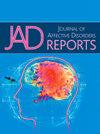Mental health and pre-existing physical illness during the COVID-19 pandemic: Evidence from the Medical Expenditure Panel Survey
Q3 Psychology
引用次数: 0
Abstract
Background
The COVID-19 pandemic poses substantial health risks, especially for individuals with pre-existing physical illness. While its physical toll is well-documented, its impact on mental health remains less well understood. This study examines mental health changes during the pandemic in U.S. adults with and without pre-existing physical conditions.
Methods
We analyzed data from the Medical Expenditure Panel Survey (MEPS), a nationally representative survey of the U.S. civilian population. Mental health outcomes, including psychological distress (Kessler-6 scale) and depressive symptoms (PHQ-2), were assessed pre-pandemic (typically between July and October 2019) and during the pandemic (between July and October 2020 in most cases). Linear regression models with individual fixed effects evaluated within-person changes in these outcomes.
Results
Overall, depressive symptoms (PHQ-2) increased slightly during the pandemic (B = 0.064, p = .002), with similar effects in individuals with (B = 0.066) and without (B = 0.062) pre-existing conditions. Psychological distress (K6) remained stable overall, but trajectories varied across population subgroups defined by sociodemographic characteristics (e.g., age, education, living arrangements) primarily among individuals with pre-existing illness.
Limitations
The magnitude of change in mental health may have been underestimated due to nonignorable sample attrition.
Conclusions
While depressive symptoms increased modestly across the population, the impact on psychological distress was more nuanced, with certain sociodemographic factors moderating change in psychological distress among individuals with chronic conditions. Findings highlight the need for targeted mental health strategies that consider both medical and sociodemographic factors to better support at-risk populations in future public health emergencies.
COVID-19大流行期间的精神健康和既往身体疾病:来自医疗支出小组调查的证据
COVID-19大流行带来了巨大的健康风险,特别是对已有身体疾病的个人。虽然它对身体造成的伤害有据可查,但它对心理健康的影响仍不太清楚。这项研究调查了美国成年人在大流行期间的心理健康变化,这些成年人有或没有先前存在的身体状况。方法:我们分析了医疗支出小组调查(MEPS)的数据,这是一项具有全国代表性的美国平民调查。心理健康结果,包括心理困扰(凯斯勒-6量表)和抑郁症状(PHQ-2),在大流行前(通常在2019年7月至10月期间)和大流行期间(大多数情况下在2020年7月至10月期间)进行了评估。具有个体固定效应的线性回归模型评估了这些结果的个人变化。结果总体而言,抑郁症状(PHQ-2)在大流行期间略有增加(B = 0.064, p = 0.002),在有(B = 0.066)和无(B = 0.062)既往存在疾病的个体中效果相似。总体而言,心理困扰(K6)保持稳定,但根据社会人口学特征(如年龄、教育程度、生活安排)界定的人口亚群的轨迹有所不同,主要是在已有疾病的个体中。由于不可忽视的样本损耗,心理健康变化的幅度可能被低估了。结论:虽然抑郁症状在人群中适度增加,但对心理困扰的影响更为微妙,某些社会人口统计学因素缓和了慢性疾病患者心理困扰的变化。研究结果强调,需要制定有针对性的精神卫生战略,考虑到医学和社会人口因素,以便在未来突发公共卫生事件中更好地支持高危人群。
本文章由计算机程序翻译,如有差异,请以英文原文为准。
求助全文
约1分钟内获得全文
求助全文
来源期刊

Journal of Affective Disorders Reports
Psychology-Clinical Psychology
CiteScore
3.80
自引率
0.00%
发文量
137
审稿时长
134 days
 求助内容:
求助内容: 应助结果提醒方式:
应助结果提醒方式:


